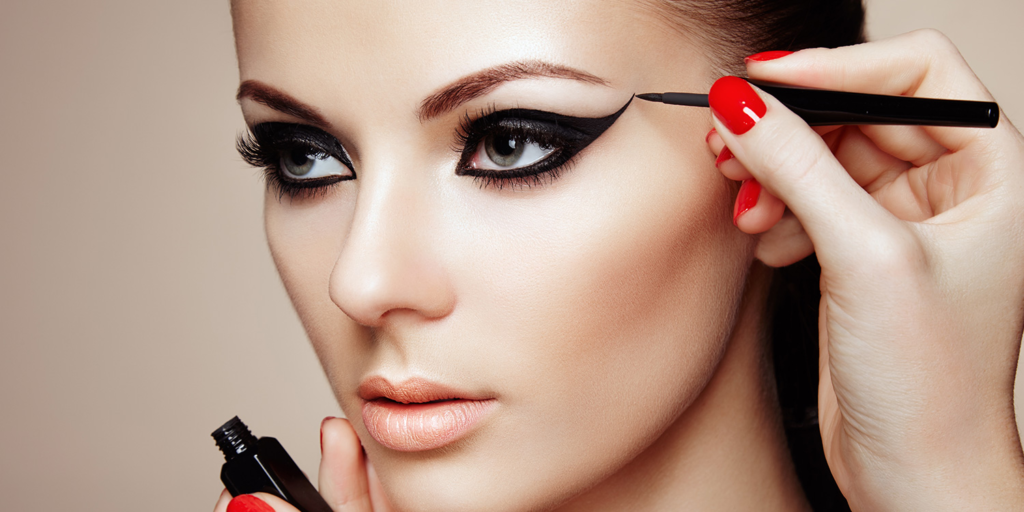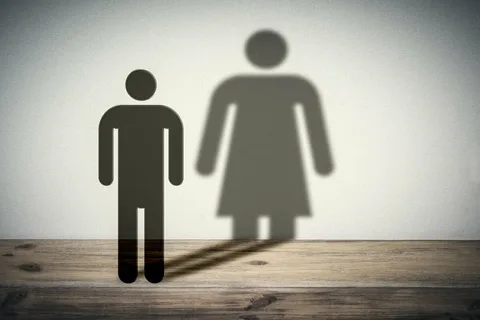Are you a male who wants to transform into a female? Do you feel like you were born in the wrong body and want to express your true self? If so, you are not alone. Many people go through the process of male to female transformation, also known as gender transition or gender affirmation. This is a complex and challenging journey that involves physical, psychological, social, and legal aspects. But it is also a rewarding and fulfilling one that can bring you happiness and peace.
In this article, we will guide you through the steps and options of male to female transformation. We will explain what it means, why people do it, how to do it, and what to expect from it. We will also share some tips and resources to help you along the way. Whether you are just curious, considering, or already undergoing male to female transformation, this article is for you.

What is Male to Female Transformation?
Male to female transformation is the process of changing one’s appearance, identity, and expression from male to female. It is also known as MtF transition, transgender transition, or gender reassignment. It is a personal and individual decision that varies from person to person. Some people may want to change only some aspects of their gender, while others may want to change everything. Some people may do it gradually, while others may do it quickly. Some people may do it privately, while others may do it publicly. There is no right or wrong way to do male to female transformation, as long as it makes you happy and comfortable.
Male to female transformation can involve different methods and procedures, such as:
- Hormone therapy: This is the use of medications to alter the levels of hormones in the body. Hormone therapy can help feminize the body by reducing male characteristics and enhancing female characteristics. For example, it can reduce facial and body hair, lower the voice, shrink the Adam’s apple, decrease muscle mass, increase breast size, redistribute fat, and soften the skin. Hormone therapy can also affect the mood, emotions, libido, and fertility of the person. Hormone therapy is usually the first step of male to female transformation and can be started as early as puberty. It can be done under the supervision of a doctor who can prescribe the right dosage and monitor the effects and side effects.
- Surgery: This is the use of medical procedures to alter the shape and function of the body. Surgery can help create a more feminine appearance by modifying the face, chest, genitals, and other parts of the body. For example, it can reshape the nose, chin, forehead, cheeks, lips, and eyebrows, enlarge the breasts, remove the testicles and penis, and create a vagina and a clitoris. Surgery can also correct any defects or injuries that may affect the gender expression of the person. Surgery is usually the last step of male to female transformation and can be done after the person has completed hormone therapy and lived as a female for a certain period of time. It can be done by a qualified surgeon who can perform the operation safely and effectively.
- Hair removal: This is the use of various techniques to remove unwanted hair from the face and body. Hair removal can help create a smoother and softer look by eliminating the beard, mustache, sideburns, chest hair, back hair, and other hair that may be associated with masculinity. Hair removal can be done by shaving, waxing, plucking, threading, bleaching, or using depilatory creams. However, these methods are temporary and may cause irritation, ingrown hairs, or infections. A more permanent and effective method of hair removal is laser hair removal or electrolysis, which use light or electric currents to destroy the hair follicles. Hair removal can be done by a professional who can provide the best results and avoid any complications.
- Makeup: This is the use of cosmetics to enhance the features and appearance of the face. Makeup can help create a more feminine and attractive look by highlighting the eyes, lips, cheekbones, and other facial elements. Makeup can also conceal any flaws, blemishes, scars, or signs of aging that may affect the self-esteem of the person. Makeup can be done by using products such as foundation, concealer, powder, blush, bronzer, highlighter, eyeshadow, eyeliner, mascara, lipstick, gloss, and more. Makeup can be done by following tutorials, tips, and tricks from online sources, magazines, books, or friends. Makeup can also be done by a professional who can offer advice and guidance on the best products, colors, and styles for the person.
- Clothing: This is the use of garments and accessories to dress and adorn the body. Clothing can help express the personality, style, and taste of the person. Clothing can also reflect the mood, occasion, and season of the person. Clothing can be chosen from a wide range of options, such as dresses, skirts, pants, jeans, shorts, tops, blouses, shirts, sweaters, jackets, coats, shoes, boots, sandals, heels, flats, hats, scarves, gloves, belts, bags, jewelry, and more. Clothing can be bought from online or offline stores, thrift shops, or custom-made. Clothing can also be borrowed, swapped, or donated by friends, family, or charities. Clothing can be worn by following the latest trends, fashions, and celebrities, or by creating one’s own unique and original style.
- Voice training: This is the use of exercises and techniques to change the pitch, tone, and quality of the voice. Voice training can help create a more feminine and pleasant sound by raising the pitch, softening the tone, and smoothing the quality of the voice. Voice training can also help improve the pronunciation, vocabulary, and grammar of the language. Voice training can be done by practicing singing, humming, reading, speaking, or listening to female voices. Voice training can also be done by using apps, software, or devices that can measure, record, and modify the voice. Voice training can also be done by a professional who can teach the best methods and strategies for the person.
- Behavior modification: This is the use of habits and actions to change the mannerisms and expressions of the person. Behavior modification can help create a more feminine and graceful demeanor by adopting the posture, gestures, movements, and facial expressions that are typical of females. Behavior modification can also help develop the confidence, charisma, and charm of the person. Behavior modification can be done by observing, imitating, or learning from female role models, mentors, or friends. Behavior modification can also be done by joining support groups, communities, or organizations that can offer encouragement, feedback, and advice. Behavior modification can also be done by a professional who can provide counseling, coaching, or therapy for the person.
Why Do People Do Male to Female Transformation?
People do male to female transformation for various reasons, such as:
- Gender identity: This is the internal sense of being male, female, neither, or both. Some people may feel that their gender identity does not match their assigned sex at birth, which is based on their chromosomes, hormones, and genitals. This condition is known as gender dysphoria or gender incongruence. People with gender dysphoria may experience distress, discomfort, or dissatisfaction with their body, appearance, or role in society. They may also face discrimination, harassment, or violence from others who do not accept or understand their gender identity. Male to female transformation can help people with gender dysphoria align their body and appearance with their gender identity, and thus reduce their distress and increase their happiness.
- Gender expression: This is the external display of being male, female, neither, or both. Some people may want to express their gender in a different way than what is expected or accepted by their culture, society, or religion. This may be due to their personal preference, creativity, or curiosity. They may also want to explore their sexuality, identity, or diversity. Male to female transformation can help people with gender expression experiment with different aspects of their gender, and thus expand their horizons and possibilities.
- Gender affirmation: This is the recognition and respect of being male, female, neither, or both. Some people may want to affirm their gender in a legal, medical, or social way. This may be due to their need for safety, security, or stability. They may also want to access certain rights, benefits, or opportunities that are associated with their gender. Male to female transformation can help people with gender affirmation obtain the documents, treatments, or services that are relevant to their gender, and thus improve their quality of life and well-being.

How to Do Male to Female Transformation?
Male to female transformation is a complex and challenging process that requires careful planning, preparation, and execution. It is not something that can be done overnight or without any risks or consequences. It is also not something that can be done alone or without any support or guidance. Here are some steps and tips on how to do male to female transformation:
- Step 1: Explore your feelings and thoughts: Before you start any male to female transformation, you should first explore your feelings and thoughts about your gender. You should ask yourself questions such as: Why do I want to do male to female transformation? What are my goals and expectations? How do I feel about my body and appearance? How do I identify myself? How do I express myself? How do others perceive me? How do I cope with my challenges and difficulties?
- Step 2: Seek professional help: After you have explored your feelings and thoughts, you should seek professional help from qualified and experienced experts who can assist you with your male to female transformation. You should consult with a gender therapist, who can provide you with psychological counseling, diagnosis, evaluation, and support. You should also consult with a gender doctor, who can provide you with medical advice, prescription, monitoring, and treatment. You should also consult with a gender lawyer, who can provide you with legal guidance, representation, and documentation. You should choose professionals who are respectful, compassionate, and knowledgeable about your situation and needs. You should also follow their instructions and recommendations carefully and faithfully.
- Step 3: Inform your loved ones: After you have sought professional help, you should inform your loved ones about your male to female transformation. You should tell your family, friends, partner, children, co-workers, and anyone else who is important to you. You should be honest, open, and respectful with them. You should explain your reasons, feelings, and plans to them. You should also listen to their reactions, questions, and concerns. You should be prepared for some negative or mixed responses, as not everyone may understand or accept your decision. You should also be prepared for some positive or supportive responses, as some people may appreciate or admire your courage and authenticity. You should try to maintain a good relationship with your loved ones, as they can be a source of comfort, encouragement, and help for you.
- Step 4: Start your hormone therapy: After you have informed your loved ones, you should start your hormone therapy as prescribed by your gender doctor. You should take your medications regularly and follow the dosage and schedule. You should also monitor your physical and mental changes and report any problems or side effects to your doctor. You should be patient and realistic, as hormone therapy takes time and varies from person to person. You should also be aware of the risks and benefits of hormone therapy, such as the effects on your health, fertility, and sexuality. You should also be prepared for the social and emotional impacts of hormone therapy, such as the reactions of others, the changes in your relationships, and the fluctuations in your mood and feelings.
- Step 5: Choose your surgery options: After you have started your hormone therapy, you should choose your surgery options as discussed with your gender doctor and surgeon. You should consider your goals, expectations, and preferences, as well as the costs, availability, and quality of the procedures. You should also research the different types and techniques of surgery, such as the advantages, disadvantages, outcomes, and complications. You should also prepare yourself physically and mentally for the surgery, such as by following the pre-operative and post-operative instructions, arranging the transportation and accommodation, and having a support person or team. You should also be ready for the recovery and healing process, such as by managing the pain, infection, swelling, bleeding, and scarring, and by attending the follow-up appointments and check-ups.
- Step 6: Change your hair and makeup: After you have chosen your surgery options, you should change your hair and makeup as desired by you. You should select a hairstyle and color that suits your face shape, skin tone, and personality. You should also learn how to apply makeup that enhances your features, hides your flaws, and matches your mood and occasion. You should experiment with different products, tools, and styles, and find what works best for you. You should also seek advice and help from professionals, friends, or online sources, who can teach you the tips and tricks of hair and makeup. You should also take care of your hair and skin, by using the appropriate products, treatments, and routines.
- Step 7: Update your wardrobe and accessories: After you have changed your hair and makeup, you should update your wardrobe and accessories as desired by you. You should choose clothes and accessories that fit your body shape, size, and proportion. You should also choose clothes and accessories that express your style, taste, and preference. You should explore the different options, such as colors, patterns, fabrics, cuts, lengths, and designs, and find what suits you best. You should also follow the latest trends, fashions, and celebrities, and get inspired by them. You should also seek advice and help from professionals, friends, or online sources, who can guide you on the dos and don’ts of dressing and accessorizing. You should also take care of your clothes and accessories, by washing, ironing, folding, hanging, and storing them properly.
- Step 8: Train your voice and behavior: After you have updated your wardrobe and accessories, you should train your voice and behavior as desired by you. You should practice speaking in a higher, softer, and smoother voice, by using exercises, techniques, and devices. You should also practice acting in a more feminine, graceful, and elegant manner, by using habits, actions, and expressions. You should observe, imitate, or learn from female role models, mentors, or friends, who can show you the way of speaking and behaving. You should also seek advice and help from professionals, friends, or online sources, who can coach you on the skills and strategies of voice and behavior training. You should also monitor your progress and improvement, by recording, listening, or watching yourself, and by getting feedback and support from others.
- Step 9: Enjoy your new life: After you have trained your voice and behavior, you should enjoy your new life as a female. You should celebrate your achievements and milestones, by rewarding yourself, sharing your stories, or joining events. You should also embrace your challenges and difficulties, by coping with them, learning from them, or overcoming them. You should also pursue your goals and dreams, by exploring your interests, passions, or talents, or by seeking new opportunities, experiences, or adventures. You should also connect with your community and society, by making new friends, joining groups, or contributing to causes. You should also take care of your health and well-being, by eating well, exercising regularly, sleeping enough, and relaxing often.

Conclusion
Male to female transformation is a process of changing one’s appearance, identity, and expression from male to female. It is a personal and individual decision that varies from person to person. It involves physical, psychological, social, and legal aspects. It requires careful planning, preparation, and execution. It also requires professional help, support, and guidance. It can be challenging and risky, but also rewarding and fulfilling. It can bring happiness and peace to the person who undergoes it, as well as to the people who love and accept them.
We hope this article has given you some useful information and insights on male to female transformation. We also hope it has inspired you to pursue your own journey of gender transition, or to support someone who is doing so. Remember, you are not alone, and you are beautiful. Thank you for reading, and we wish you all the best.
Feminizator.com is a website that believes that femininity is a colorful universe. Here, you won’t find rigid definitions or worn-out stereotypes about femininity. Instead, we celebrate a vibrant spectrum with all the complexity, power and joy of being “it”. Every day, we dive into the multifaceted world of femininity. We explore topics such as inner strength, creative expression, conscious living and global perspectives. We also embrace LGBT+ and transgender people and show them different ways of being feminine. We are here to empower you to embrace your femininity, own your own story and blossom into the best version of yourself. Welcome to Feminizator. Welcome to yourself.


